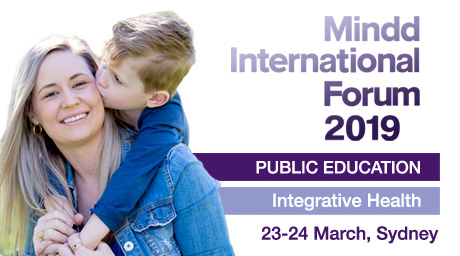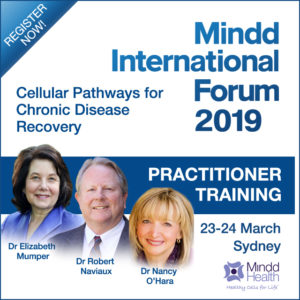Children with Central Auditory Processing Disorder (CAPD) are easily distracted and cannot focus on an auditory task for very long. The more challenging the acoustic environment the harder it is to follow speech and verbal instructions.
CAPD medical definition: Central Auditory Processing Disorder: also known as Auditory Processing Disorder is a disorder that is marked by a deficit in the way the brain receives, differentiates, analyses, and interprets auditory information such as speech. CAPD is not attributable to impairments in peripheral hearing or intellect.
Auditory Processing – the Function of Hearing
Auditory Processing refers to the function of hearing, and ultimately the translation of sounds into meaning performed at the central parts of the brain named the auditory cortex. To interpret and respond to auditory information, the brain receives signals originated by sounds coming from the external world that first enter the ear canal, vibrating the eardrum, passing the middle ear, the cochlea and the auditory nerve through the brainstem all the way to the auditory cortex.
Speech is an Auditory Signal to be Processed
Speech is the most important auditory signal used for communication. Interpretation of speech signals requires a set of auditory skills that allow processing to occur. Several analyses take place before a sound can be fully processed. To understand a verbal stimulus one needs to be able to:
- identify the sounds
- discriminate the differences in tempo, pitch, loudness, and sequence
- localize and focus on the source of the sound, at the task and
- ignore other sounds that are not important
Two Ears = a Binaural System
The sense of hearing is a binaural system, as it relies on the input from our two ears. Interaction and integration of the signals coming from the right and left ears at the brainstem, midbrain and auditory cortex level need to be intact for appropriate processing to occur.
Central Auditory Processing Disorder Can Lead to Impaired Skills
A breakdown in one or more of the skills required in the process may result in an Auditory Processing Disorder. An auditory processing disorder may be diagnosed with specialized audiological assessment when the impaired skills are identified and individualized therapies recommended.
Preventions and Correction of APD
Prevention by maintaining a healthy body is by far the best remedy but even when an auditory processing disorder is already established, there are measures you can take to overcome the adverse effects and consequences for your child’s development. Auditory processing disorder (APD) is a common finding amongst children with atypical development, behavioral and learning difficulties ¹.
The Sense of Hearing and Auditory Processing
The processing provided by the sense of hearing, auditory processing, allows us to interpret what we hear through our ears, whereas:
- visual processing relies on the sense of sight received from our eyes
- the sense of touch is provided by the skin
- taste via the tongue
- smell through the nose and
- balance via the movements detected by the vestibular system
Sensory Connections to the Brain
Each sense has an exclusive nerve branch that conducts sensorial stimuli from the peripheral organ to the brain. The brain analyses and interprets the information received from each sensorial organ keeping us in touch with our surrounding environment. If your brain is unable to process sensorial information appropriately, you may experience a “sensorial processing disorder” which will affect your reception and interpretation of information.
Importantly, a sensorial processing disorder does not imply a sensorial loss per se. For example, your child (or any adult too) may have perfect hearing acuity but is unable to adequately process auditory information, hence an auditory processing disorder but not a hearing loss.
On the other hand, a child may have a vision loss which will not lead to any visual processing disorder providing they use prescription glasses to correct for that particular visual deficit. Each human body is unique and appropriate bodily function relies on several inherited and environmental factors. Sensorial processing is a brain function and the cause of a processing disorder is variable amongst children with no other physical lesions affecting sensorial organs.
The Gut is Responsible for Most Disorders Affecting Brain Function
Current research points to the gut as the organ responsible for most disorders affecting brain function 8, 9, hence, processing disorders are likely to be caused by a gut dysfunction. The gut is ultimately responsible for allergies leading to impaired sensorial function.
Just imagine how a child’s sensorial inputs to the brain become affected when his or her nose is constantly blocked. How can a child process sensorial information when experiencing “brain fog” for lacking minerals and vitamins?
These are usually some of the triggers of a processing disorder in an otherwise healthy child.
Treat the Gut First
Treating the gut is the first step towards improving sensorial processing function but it may not reverse an already established processing disorder. Further therapies are required to address and strengthen each individual processing skill as required. Such therapies should aim to train the functionality of the sense in question to perform at best of its capacity. The 6 senses cannot be ranked in order of importance as it depends on the circumstances requiring their use. Auditory and visual processing, for example, is on par with learning a written language, while auditory processing is arguably more important for oral communication such as talking.
Processing for all Six Senses
All the six senses of smell, taste, touch, vision, hearing, and balance are equally important for your child’s development and learning. Language, emotional and cognitive development are only fully achieved if the information provided by each sense is optimally processed at the brain level. And the brain, as we now know, is nourished via the gut, hence, the importance of a healthy diet and lifestyle.  Written and contributed by: Dr Celene McNeill Audiologist Healthy Hearing & Balance Care healthyhearing.com.au
Written and contributed by: Dr Celene McNeill Audiologist Healthy Hearing & Balance Care healthyhearing.com.au
References:
- Kraus, Nina, et al. “Auditory neurophysiologic responses and discrimination deficits in children with learning problems.” Science 273.5277 (1996): 971.
- Gottlieb, Marvin I., Peter W. Zinkus, and Anne Thompson. “Chronic middle ear disease and auditory perceptual deficits: is there a link?.”Clinical Pediatrics18.12 (1979): 725-732.
- Nguyen, Lily HP, et al. “Similar allergic inflammation in the middle ear and the upper airway: evidence linking otitis media with effusion to the united airways concept.” Journal of allergy and clinical immunology 114.5 (2004): 1110-1115.
- Teele, David W., Jerome O. Klein, and Bernard A. Rosner. “Epidemiology of otitis media in children.”Annals of Otology, Rhinology & Laryngology89.3_suppl (1980): 5-6.
- Jerger, James, and F. Musiek. “Report of the consensus conference on the diagnosis of auditory processing.”Journal of the American Academy of Audiology11.9 (2000): 467-474.
- Dunn, Winnie. “The Impact of Sensory Processing Abilities on the Daily Lives of Young Children and Their Families: A Conceptual Model.”Infants & Young Children9.4 (1997): 23-35.
- Goldberg, J.M. et al. The Vestibular System: a Sixth Sense. Oxford University Press (2012)
- Koloski, Natasha A., et al. “The brain-gut pathway in functional gastrointestinal disorders is bidirectional: a 12-year prospective population-based study.”Gut61.9 (2012): 1284-1290.
- de Theije, Caroline GM, et al. “Pathways underlying the gut-to-brain connection in autism spectrum disorders as future targets for disease management.”European journal of pharmacology668 (2011): S70-S80.
- http://www.healthyhearing.com.au/conditions/auditory-processing-disorders/







